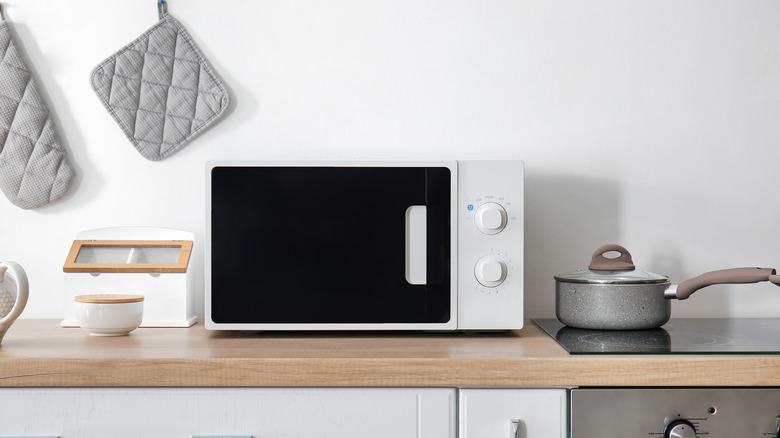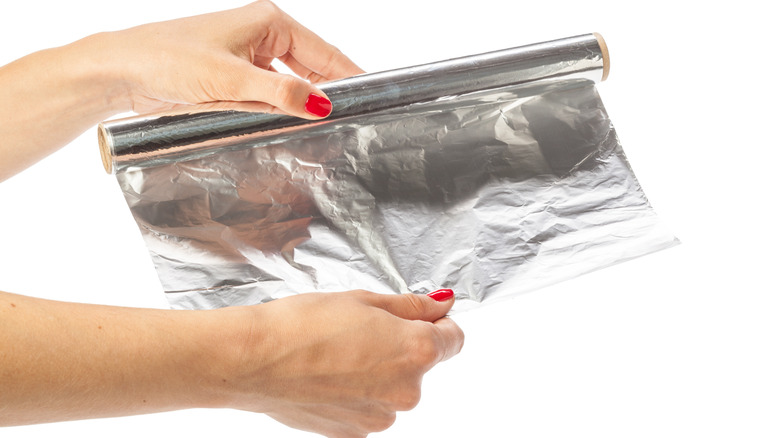This Is What Happens When You Put Tin Foil In The Microwave
Microwaves are one of the most genius inventions from the past century and one that makes our day-to-day lives so much easier. In fact, according to the U.S. Bureau of Labor Statistics, 90% of American households have a microwave (via Live Science). The first microwaves released for home use in 1955 were as big as an oven and cost a whopping $1,295. It wasn't until 10 years later that the size was minimized to fit on a kitchen countertop and the price was reduced to under $500. Today, countertop microwaves can be found for as little as $50.
You may have heard that tin foil should not be microwaved, but have you ever wondered why? First, it's important to understand how the technology behind microwaves works. Microwave ovens use radio waves to heat food at a frequency of roughly 2,500 megahertz (2.5 gigahertz), per How Stuff Works. At this frequency, water, fats, and sugars absorb the waves, which are then converted into heat. However, certain materials, such as porcelain, glass, and plastics, do not absorb the radio waves and are, therefore, safe to use to heat up your food. However, metal is an entirely different story. Thick metals reflect the radio waves, meaning the food you're trying to heat up would never actually cook. But thin pieces of metal, such as aluminum foil, behave differently than their thicker counterparts. Keep scrolling to find out what happens to tin foil in the microwave.
You may need to reach for a fire extinguisher if you put tin foil in your microwave
You may have noticed that the walls of microwaves are made of metal. The walls act as a mirror, allowing the radio waves to bounce off of them and reflect toward the food you're heating up (via How Stuff Works). The kicker here is that these walls are made of a thick metal. When thin metals are placed inside a microwave, such as the aluminum foil you use to wrap up your leftovers, the electric fields behave differently. The fields cause the tin foil to heat up quickly — so quickly, in fact, that the foil can catch fire. When foil is crinkled, this causes even more of a hazard because the electrical current running through the foil will hit the sharp edges of the crinkled parts and cause sparks. Needless to say, these sparks spell danger.
Note that your microwave oven is unlikely to explode if you place tin foil inside of it, but a fire is extremely likely even if the foil stays inside the microwave for a short period of time. However, if you accidentally microwave food in tin foil and miraculously don't start a fire, your food will be safe to eat. If fires aren't your thing, stick to microwave safe materials to heat your food in. Plastic and porcelain are always a great choice, while a simple paper towel also does the trick.

